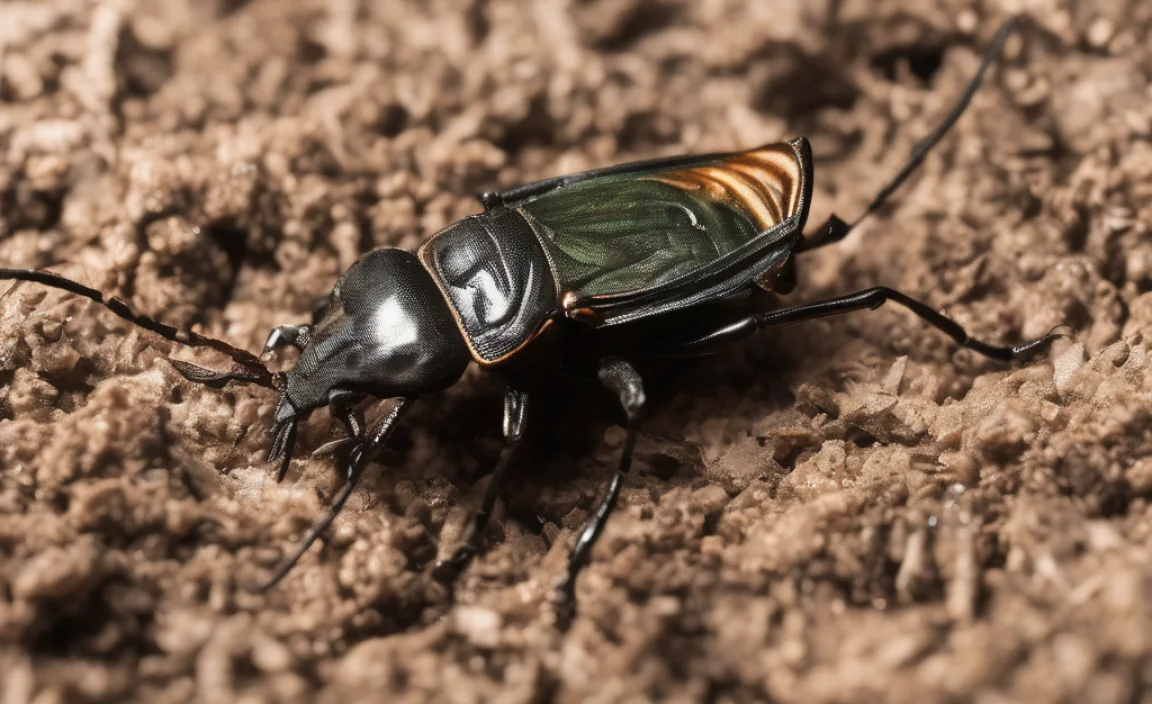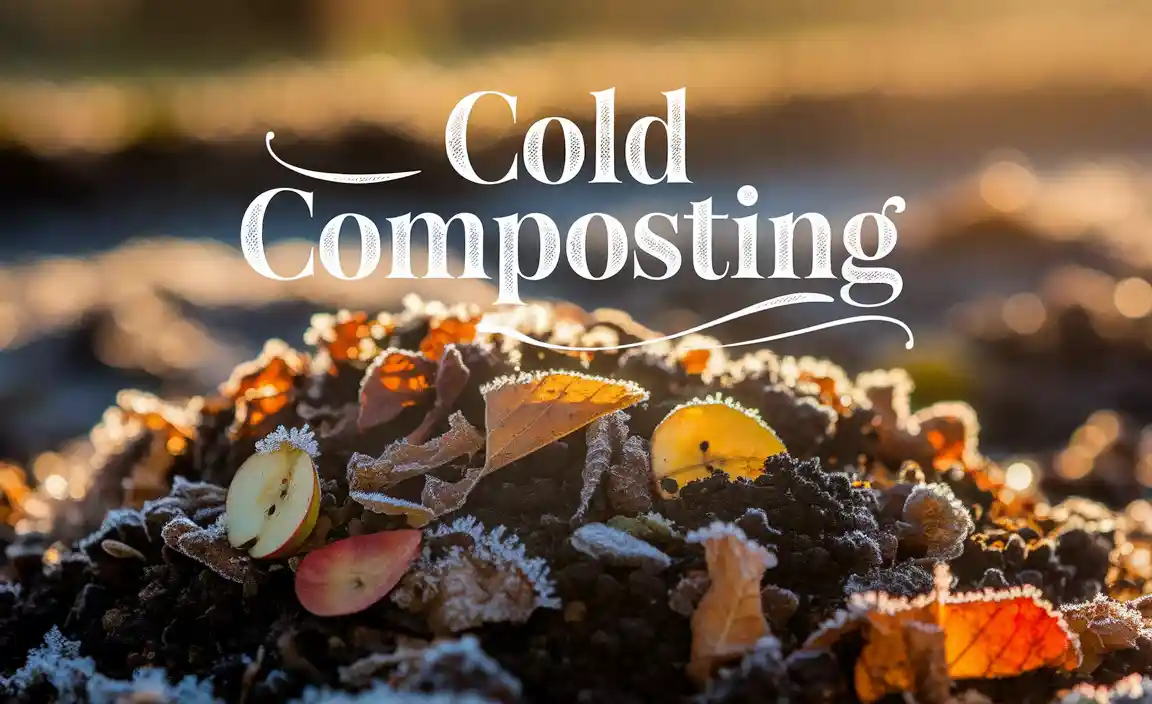Thinking about a compost toilet? It’s a fantastic eco-friendly choice! But like any new adventure, there can be a few bumps along the way. Don’t worry, I’m here to help you navigate them. We’ll cover the common slip-ups beginners make so you can enjoy a smooth and successful compost toilet experience. Let’s dive in and avoid those pesky pitfalls together!
Common Compost Toilet Mistakes: What to Avoid
Compost toilets are brilliant for reducing water usage and creating valuable compost for your garden. However, getting started can feel like a maze! Many folks run into similar issues, leading to frustration or less-than-ideal results. My goal is to arm you with the knowledge to sidestep these common traps. We’ll break down exactly what can go wrong and, more importantly, how to fix it before it even starts.
Mistake 1: Not Understanding Your Composting System
This is the big one! Compost toilets aren’t magic boxes; they’re carefully designed systems that mimic natural decomposition, but with a little help. The most common oversight is not realizing there are different types of compost toilets and that each has its own needs.
Types of Compost Toilets: A Quick Look
- Self-Contained Units: These are often portable and compact. The collection tank and composting process happen in one unit. They’re great for RVs, boats, or small cabins.
- Central Composting Systems: These are more permanent and have a larger composting chamber, often located away from the toilet itself (like in a basement or outside). The toilet unit is essentially a funnel.
- Waterless vs. Low-Water: While often called “waterless,” some models use a small amount of liquid (like urine diverting models) or a tiny bit of water for rinsing.
Why it’s a mistake: If you buy a system meant for dry composting and start adding liquids, you’ll end up with a soggy mess. Or, if you’re used to a self-contained unit and get a central system, you might underestimate the space and management needed.
The Fix: Do Your Homework!
Before buying, research different models. Understand how they handle solids and liquids, what materials they use, and what the maintenance looks like. Websites like EPA’s composting resources offer great background on the science of decomposition, which is key to understanding your toilet.
Mistake 2: Insufficient Carbon Material (The Missing “Browns”)
This is the most frequent issue, especially for beginners. Compost toilets need a balance of “greens” (nitrogen-rich, like humanure) and “browns” (carbon-rich). Without enough browns, things get smelly and don’t break down properly.
Why It Happens
People often underestimate how much brown material they’ll actually use. After each solid deposit, a scoop or two of carbon material is usually recommended. If you’re not adding enough, the solids will sit there, creating anaerobic (without oxygen) conditions, which leads to that unpleasant odor.
The Fix: Stock Up on Browns!
Good carbon materials include:
- Sawdust (untreated pine or fir is best)
- Coconut coir (often used as a peat moss alternative)
- Peat moss
- Shredded cardboard or newspaper (ensure no glossy or colored inks)
- Straw or dry leaves
Keep a generous supply right next to your toilet. Think of it like toilet paper – you don’t want to run out!
Mistake 3: Over-Reliance on Sawdust Alone
While sawdust is a popular choice, relying solely on it can sometimes create compaction. This can hinder airflow, which is crucial for aerobic decomposition. You want a good mix of materials to create a fluffy, well-aerated composting mass.
The Fix: Vary Your Browns
Mixing materials is key. Try combining sawdust with coconut coir or shredded paper. This creates a better structure that allows air to circulate more freely. Think of it like making a really good cake – you need a mix of ingredients for the perfect texture!
Mistake 4: Improper Urine Management
Urine is sterile when it leaves the body, but it can become a breeding ground for ammonia-smelling bacteria when it mixes with solids and is left exposed to air. Many modern compost toilets have a way to separate urine from solids (urine-diverting toilets). If yours doesn’t directly divert, how you manage what’s left behind is critical.
Common Urine Problems
- Odor: Unmanaged urine can lead to significant smells.
- Build-up of Salts: In some systems, concentrated urine can lead to salt build-up that’s hard to clean.
- Incomplete Composting: Excessive moisture from urine can hinder the composting process.
The Fix: Divert or Dilute!
- Urine-Diverting Toilets: These are highly recommended. They separate urine into a separate collection and evaporation/disposal system. Urine can often be diluted with water (10:1 ratio) and used as a nitrogen-rich fertilizer for non-edible plants (check local regulations).
- If No Diversion: Some systems use a liquid-tight seal and a small amount of water flushed after each use to wash solids and urine into the composting chamber. The key here is ensuring enough carbon material is added to absorb the moisture and odor.
- Regular Emptying: If urine is collecting in the solids chamber, ensure it’s emptied regularly to prevent over-saturation.
Mistake 5: Neglecting Ventilation
Airflow is the “fresh breath” your compost toilet needs to work efficiently and odor-free. Without proper ventilation, the precious aerobic bacteria can’t do their job, and you’ll invite anaerobic conditions – which means bad smells and slow decomposition.
The Importance of Airflow
Aerobic bacteria thrive in oxygen-rich environments. They break down waste quickly and without producing foul odors. Anaerobic bacteria, on the other hand, work without oxygen and produce gases like hydrogen sulfide, which smells like rotten eggs.
The Fix: Ensure Continuous Airflow
- Fan-Operated Systems: Many commercial units have a small, low-power fan that continuously draws air through the composting chamber and vents it outside. Ensure this fan is always running.
- Passive Ventilation: Simpler systems might rely on a vent pipe. Make sure this pipe is clear of obstructions (birds’ nests, leaves) and that it extends above the roofline.
- Occasional Turning: For some systems, you might need to manually aerate the compost pile periodically (e.g., with a compost aerator tool).
For more on ventilation of composting systems, check out resources from university extension offices, which often provide detailed guides on waste management and composting, like those found on University of Maryland Extension.
Mistake 6: Not Emptying the Toilet at the Right Time
Every compost toilet system has a capacity. Overfilling it is a recipe for disaster – and a very unpleasant experience.
The Consequences of Overfilling
When a compost toilet is too full, there’s no room for fresh material, and the composting process is severely hindered. This can lead to backups, spills, and an unmanageable amount of waste. It also means the compost might not be fully processed, making it unsuitable for direct use on gardens.
The Fix: Know Your Capacity and Schedule
- Read the Manual: Your toilet’s manual will specify its capacity and recommended emptying intervals.
- Monitor Levels: Keep an eye on the fill level. Most units have an indicator or it’s easy to see when you’re approaching full.
- Regular Maintenance: Don’t wait until it’s overflowing. Schedule regular emptying and “turning” or “curing” of the compost material.
Mistake 7: Using Insufficient Composting (and Curing) Time
This is crucial! Just because waste is in the toilet doesn’t mean it’s ready to be used on your garden. True composting, especially for humanure, requires time to break down pathogens and stabilize the material.
Why Time is Essential
The goal is to create a safe, nutrient-rich soil amendment. This doesn’t happen overnight. Pathogens need to be destroyed, and the material needs to fully decompose into a stable humus-like substance. Rushing this process can lead to health risks and a compost that’s not beneficial.
The Fix: Be Patient and Follow Guidelines
- Composting Phase: This is the initial breakdown in the toilet unit.
- Curing Phase: Once removed from the toilet, the compost needs further time to mature. This can take anywhere from a few months to over a year, depending on the system, temperature, and moisture levels.
- Follow Best Practices: Many experts recommend that the compost material should sit for at least 1-2 years after it’s removed from the toilet unit before being applied to food crops. For general garden use, a minimum of 6 months to a year is often advised after the material is finished in the toilet.
- Consult Local Health Departments or University Extensions: They can provide specific guidelines and recommendations for safe composting of human waste in your region. Resources like the National Agricultural Library offer further information on humanure composting best practices.
Mistake 8: Not Protecting Against Pests
If your compost toilet is outdoors or has an outdoor vent, you might find it attracting unwanted visitors.
Potential Pests
- Insects (flies, gnats)
- Rodents
- Birds
The Fix: Seal It Up!
- Vent Screens: Cover all vent openings with fine mesh screens (like window screen material) to prevent insects and small animals from entering.
- Secure Lids: Ensure the toilet lid seals properly when not in use.
- Proper Management: Regularly adding carbon material helps to cover any exposed waste, making it less attractive to pests.
- Location: If possible, locate your compost toilet unit away from your main living areas or food gardens.
Mistake 9: Ignoring Odors Entirely
A well-functioning compost toilet should have minimal odor, perhaps a faint earthy scent. If you’re noticing strong, foul smells (like ammonia or rotten eggs), something is amiss.
What Strong Odors Indicate
Strong odors are almost always a sign of anaerobic conditions or insufficient carbon material. It means the “bad” bacteria are taking over.
The Fix: Rebalance Your System
- Add More Browns: This is usually the first and easiest fix. Add a generous scoop of your chosen carbon material after every use and a bit extra if you notice odors.
- Check Ventilation: Ensure your fan is running or your vent pipe is clear.
- Check Urine Management: Is urine pooling? Is it overflowing? Address any urine issues.
- Empty Contents: If the system is saturated or hasn’t been emptied in a while, it might be time for a complete removal of solids to re-establish the balance.
Mistake 10: Treating It Like a Regular Toilet
This sounds obvious, but sometimes the habits of a lifetime are hard to break! A compost toilet is a biological system, not a plumbing fixture.
The Differences
You can’t just flush and forget. You need to actively participate in the process by adding carbon material, monitoring levels, and eventually managing the finished compost. And, importantly, avoid flushing inappropriate items down.
The Fix: Embrace the Process
- Only Human Waste and Carbon Material: Do not flush toilet paper (unless it’s specifically designed to break down in your system and you add extra carbon), disinfecting wipes, feminine hygiene products, cotton swabs, or anything else. These can disrupt the composting process and create clogs or odors.
- Dedicated Bin for Toilet Paper: Most people use a separate small bin for used toilet paper, which is then composted separately or disposed of.
- Be Mindful: Think of your compost toilet as an on-going project rather than a set-and-forget fixture.
Compost Toilet Management: A Quick Reference Table
To help you remember the core principles, here’s a handy table for managing your compost toilet:
| Issue | Common Cause | Solution | Key Principle |
|---|---|---|---|
| Bad Odors | Too little carbon material; lack of ventilation; anaerobic conditions | Add more carbon material (sawdust, coir); check/improve ventilation; ensure airflow | Aerobic decomposition needs oxygen! |
| Wet/Gooey Contents | Too much liquid (urine); not enough carbon absorption | Add more dry carbon material; ensure urine diversion/management is working | Balance moisture with absorbency |
| Slow Composting | Compost pile too cold; insufficient material; lack of turning | Add nitrogen-rich material if too cool; turn the pile periodically; ensure adequate volume | Temperature, moisture, air, and microbes are key |
| Attracting Pests | Exposed waste; open vents | Cover waste with carbon; install vent screens; maintain sealed lid | Keep it sealed and covered |
| System Overfilled | Not emptying regularly | Schedule regular emptying and composting/curing time | Know your system’s capacity |
Conclusion: Compost Toilet Success is Achievable!
Diving into the world of compost toilets is an exciting step towards sustainability and self-sufficiency. While there are a few common pitfalls, as we’ve explored, they are entirely avoidable with a little knowledge and preparation. Understanding your system, keeping that balance of carbon material topped up, ensuring good ventilation, and giving your compost ample time to cure are the cornerstones of success.
Frequently Asked Questions About Compost Toilets
Still have some questions bubbling up? That’s perfectly normal! Here are a few common concerns:
Q1: Are compost toilets smelly?
A well-functioning compost toilet should not produce foul odors. A faint, earthy smell might be present, but strong ammonia or rotten egg smells indicate a problem, usually a lack of carbon material or poor ventilation. Adding more carbon (“browns”) and ensuring good airflow are the primary solutions.
Q2: Do I need to add something after every solid deposit?
Yes, for most systems, it’s recommended to add a scoop or two of carbon material (like sawdust or coconut coir) after each solid deposit. This covers the waste, absorbs moisture and odors, and begins the composting process.
Q3: What happens to the urine?
In urine-diverting toilets, urine is typically channeled into a separate container or outlet. It can be composted, diluted as fertilizer (check local regulations), or evaporated. In non-diverting systems, urine mixes with solids and is absorbed by the added carbon material.
Q4: How often do I need to empty the toilet?
This depends entirely on the size of your system and how many people are using it. Some smaller units might need emptying every few days, while larger central systems might go months. Always refer to your toilet’s manual and monitor the fill level.
Q5: Is the compost safe to use on my garden?
Yes, but only after proper composting and curing. This process takes time (often 1-2 years for food crops) to ensure all pathogens are destroyed and the material is stable and nutrient-rich. Always follow best practices and local guidelines.
Q6: Can I use regular toilet paper in a compost toilet?
This varies by system. Some systems are designed to handle certain types of toilet paper if you add extra carbon material. However, many people opt to use a separate bin for toilet paper and compost it elsewhere, or use biodegradable, unbleached toilet paper sparingly.
Q7: What materials should I absolutely NOT put in a compost toilet?
Avoid flushing chemicals, non-biodegradable items (wipes, hygiene products, plastics), food scraps (unless specifically designed for your system), or anything that could clog or damage the unit. Stick to human waste and approved carbon materials.

I am passionate about home engineering. I specialize in designing, installing, and maintaining heating, ventilation, and air conditioning systems. My goal is to help people stay comfortable in their homes all year long.





